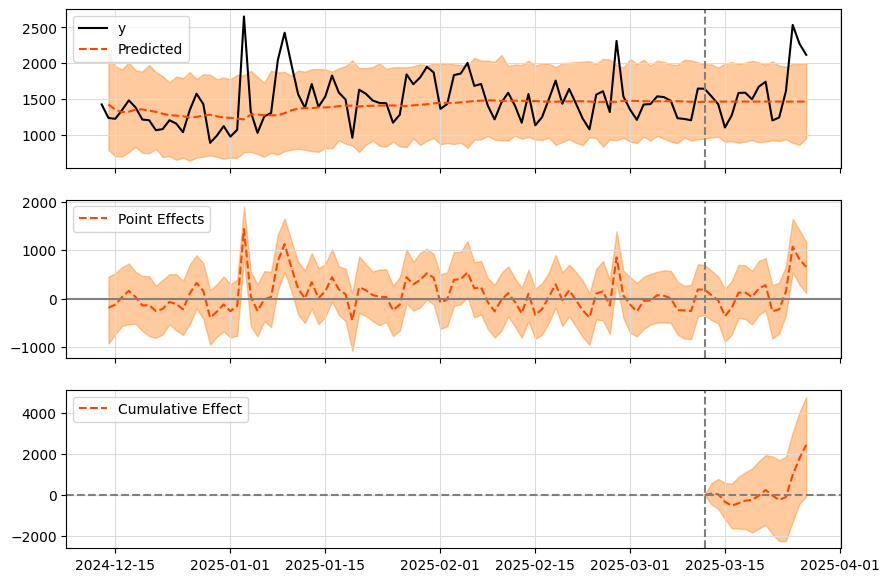Causal Impact Analysis is a statistical method that estimates the causal effect of an intervention (like a Google Core Update) on a time series. It works by:
| Metric | % Change | Causal Effect | p-value | Significant |
|---|---|---|---|---|
| Clicks | -15.25% | -18.40% | 0.0012 |
Causal Impact plots typically show three panels:
The vertical dashed line indicates when the intervention (e.g., Google Core Update) occurred.

Example of a Causal Impact plot showing the three panels: original time series (top), pointwise effect (middle), and cumulative effect (bottom).
When analyzing causal impact results:
Regression Analysis is a statistical method that examines the relationship between a dependent variable (like clicks) and one or more independent variables (like time and the presence of a Google Core Update). It helps determine if the update had a statistically significant effect on your metrics.
| Metric | % Change | Regression Effect | p-value | Significant |
|---|---|---|---|---|
| Clicks | -15.25% | -0.182 | 0.0012 |
Regression analysis plots typically show:
The vertical line or shaded area indicates when the Google Core Update occurred.
When analyzing regression results:
Both methods help analyze the effect of Google Core Updates, but they have different strengths:
| Feature | Causal Impact | Regression Analysis |
|---|---|---|
| Best for | Time series with clear pre/post periods | Controlling for multiple variables |
| Handles seasonality | Yes, automatically | Yes, with explicit variables |
| Prediction method | Bayesian structural time series | Linear regression |
| Interpretation | More intuitive visual results | More detailed statistical output |
For the most comprehensive understanding, consider both methods together:
Remember that statistical analysis is just one tool for understanding the impact of Google Core Updates. Always combine these insights with qualitative analysis of your content, user behavior, and industry trends.